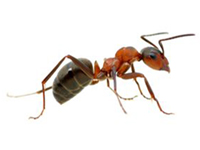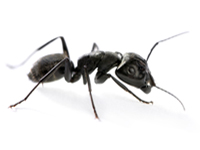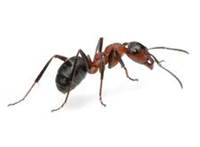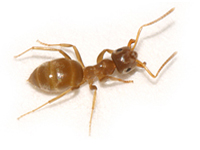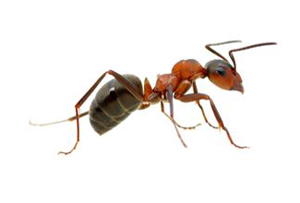
Size:
Small 1/10 to 1/6 inch (2-4 mm)
Characteristics:
The pavement ant is a common household pest. Its name comes from the fact that colonies usually make their homes in pavement. The pavement ant is a small, brown to black ant with pale legs and a black abdomen. They will enter the home looking for food. They may become numerous in a short period of time in a kitchen or outside on a patio.
During early spring, colonies attempt to conquer new areas and often attack nearby enemy colonies. These result in huge sidewalk battles, sometimes leaving thousands of ants dead. Because of their aggressive nature, they often invade and colonize seemingly impenetrable areas. In summer time the ants dig out the sand in between the pavements to vent the nests.
This ant is rarely aggressive, but it can bite and sting when disturbed. Though it is generally too weak to penetrate human skin, it can cause allergic reaction or rash in sensitive people.
Habitat:
Pavement ants are very common in the eastern United States. Pavement ants also dwell in the undersides of logs, bricks, stones, patio blocks and boards. Pavement ants may also nest under mulching or open soil close to building foundations. They also can nest indoors, such as under floors, inside insulation and within walls.
Food:
Pavement ants will feed on a wide variety of foods, including meats, grease, live and dead insects, seeds and honeydew from aphids. They prefer to eat greasy foods, and can eat many foods consumed by humans. They forage for food for their colonies and set up trails to food sources from their nests.
Pavement ant workers enter houses to forage and can become a nuisance when large groups infest a kitchen or garden patio.
Control:
The use of baits and/or liquid sprays are currently the most effective methods of control.
The nests of pavement ants are difficult to locate, so the most efficient way to manage an infestation is to contact a pest control professional.

